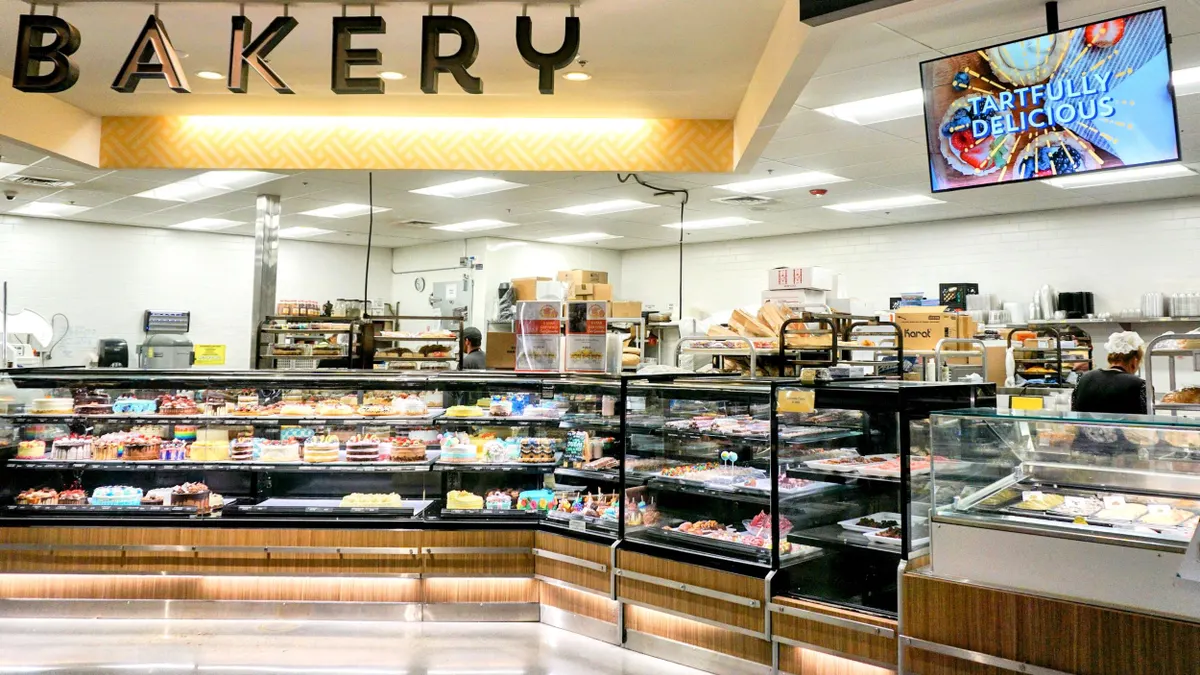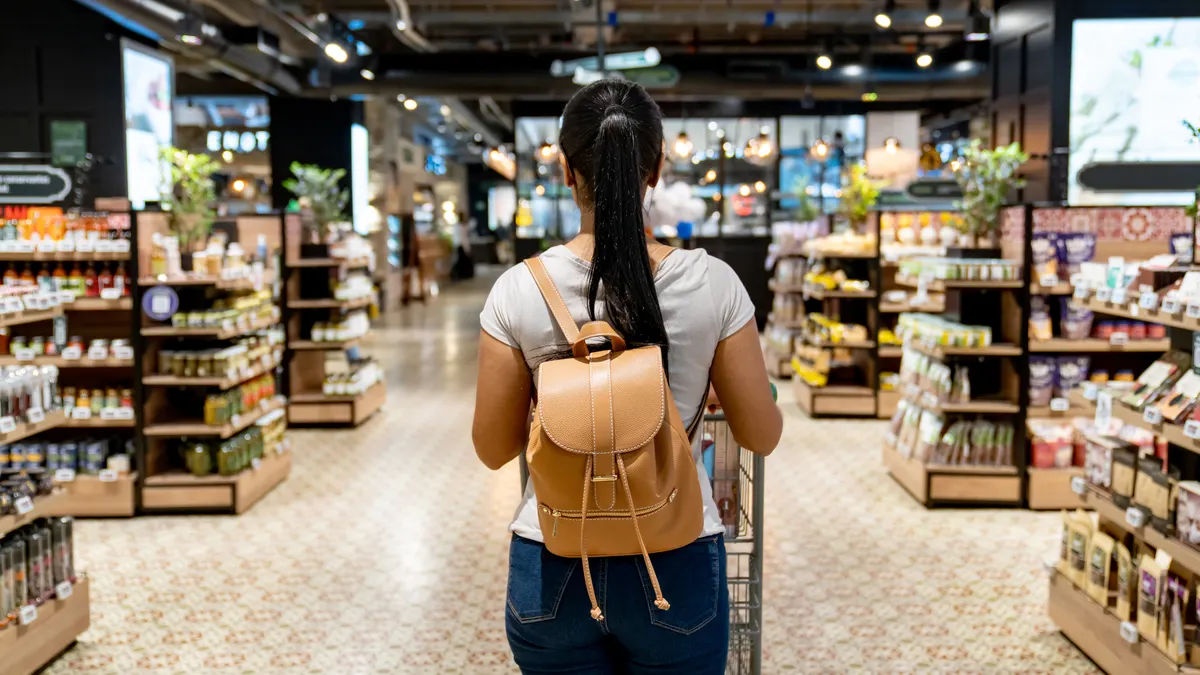When Save-On-Foods updated its app in January to better accommodate shoppers during the pandemic, it ended up inadvertently introducing barriers for visually impaired consumers. When one of those customers, Richard Marion, had trouble getting the Western Canada chain to remedy the issue, he took his story to a local TV network and ended up receiving an apology from the company.
The pandemic has accelerated the adoption of online grocery shopping by a matter of years, experts say. But that growth has also increased scrutiny of how accessible grocers' websites and apps are for consumers, including those with disabilities.
That's prompting retailers and e-commerce providers to pay closer attention to digital accessibility. But companies say they're struggling with a legally murky landscape. While grocers’ physical stores count as places of public accommodation under Title III of the Americans with Disabilities Act, courts around the U.S. have ruled differently on whether that accommodation extends to websites and apps.
Retailers are waiting for new regulations on website accessibility from the Department of Justice (DOJ), which the agency started working on more than 10 years ago but paused in 2017, when it said it needed to re-evaluate if new regulations were "necessary and appropriate."
As guidelines evolve and lawsuits continue to be filed, grocers and e-commerce providers are trying to figure out best practices for digitally accessible design and maintenance.
“It's not a simple matter of flipping a switch and the website is magically compliant,” said Stephanie Sheridan, a partner at the law firm Steptoe & Johnson who represents retailers and has experience with digital accessibility cases.
Benefits to digital accessibility
Sources told Grocery Dive that grocers with websites and apps should be proactive about building and maintaining their digital properties with accessibility in mind. If they don't, they risk potentially expensive legal action, public backlash and limiting their customer base as well as prospective employees.
About 61 million U.S. adults, or 26% of the population, have some type of disability, according to the Centers for Disease Control and Prevention. Accessibility can cover cognitive, behavioral, visual, auditory and other types of disabilities. For example, an online shopper with a visual disability may use a screen reader, Braille display, zoom function or high-contrast mode, while a person with an auditory disability may rely on captions.
Brian Moyer, CEO of e-commerce provider Freshop, said the percentage of sales by shoppers using screen readers can vary from half of a percent for most of Freshop's grocery clients to up to 20% for a few that have specifically worked to engage shoppers with disabilities.
“It's not a simple matter of flipping a switch and the website is magically compliant,”

Stephanie Sheridan
Partner, Steptoe & Johnson
It's less expensive and easier to actively manage digital accessibility rather than treat it as an afterthought, said Michele Landis, co-founder and chief revenue officer of web accessibility company Accessible360, which audits company websites for accessibility and provides support.
“When you build a new house, you put your outlets in before you Sheetrock it, and that’s literally what we’re doing here," Landis said, noting that the company can give the "CliffsNotes" version of what accessible design can entail before a website or app gets built.
Companies often see a boost in search engine optimization when they improve digital accessibility, Landis said. Technical components, like adding in alternative (alt) text, which is a short written description of an image, and improving site navigation, can enhance the user experience and potentially lead to a website having a higher ranking on search engine results.
"An accessible site makes your SEO go through the roof," Landis said.
Designing for people with disabilities
Many companies follow accessibility guidelines published by the World Wide Web Consortium, a leading internet standards organization. The organization's Web Content Accessibility Guidelines (WCAG) provide technical standards with testable criteria categorized by three compliance levels ranging from minimal (Level A) to acceptable (Level AA) to optimal (Level AAA). The latest WCAG version is expected to get published later this year.
The guidelines are thorough but require interpretation. Jess Richman, senior vice president of product and design at Rosie, said it took almost a year and a “significant investment” of time and resources for the e-commerce provider to level up compliance. Its platform now allows users to stop GIFs, switch to a high-contrast mode, scale font size and toggle on and off a feature that makes the site appear black and white.
From an engineering and design perspective, achieving digital accessibility means attending to a wide range of features, like encoding images so that screen readers can recognize them, said Sylvain Perrier, president and CEO of grocery e-commerce platform Mercatus Technologies. The alt text needs to be accurate and distinguishable.
"[The alt text] can't always be peach, peach, peach, peach, peach, peach. The alt text has to ... say this is a Georgia peach, this is peach punch juice," Perrier said.
One ongoing challenge is that retailers or e-commerce providers can introduce new barriers as they regularly update websites or apps. "Because there's such a degree of flexibility and control in our platform in the hands of the retailer, sometimes our retailers may not know that they are building content that's not accessible," Perrier said.
Moyer of Freshop said he's had to flag inaccessible elements to grocery clients before, like pointing out that a new calendar feature or an uploaded PDF won't be usable to someone using assistive technology.
To catch accessibility barriers that pop up, companies are using automated scanning tools and working with auditing firms that specialize in digital accessibility. For example, Rosie uses a combination of internal audits and scanning tools, like Wave and Google Lighthouse, to monitor desktop and mobile sites, Richman said.
But Landis cautions against retailers solely relying on scanning tools, which are similar to a spellcheck that catches grammatical errors, because they only cover about 25% to 30% of the WCAG guidelines. For example, a scanning tool can identify whether or not an image has alt text but can’t discern what the alt text says and whether or not it’s helpful to the shopper.
Sheridan recommends grocers vet accessibility auditing firms in advance and find out if they will stand by their work if legally challenged and issue a letter of conformance, noting that firms have "mushroomed up everywhere" to monetize a growing need to help monitor websites.
“The gold standard in checking to see if a website is really compliant is [to] have a blind person go through and see what he or she encounters,” she said.
The need for regulations
Sources said the WCAG guidelines are a starting point but stronger oversight and government regulation are needed.
“The WCAG guidelines are just that — they’re guidelines. They are not the law," Sheridan said.
This poses some tricky questions for retailers and e-commerce companies: Does every element on a website or app need to be accessible? Who is responsible if a third-party tool like a map or store locator isn't functional with assistive technology?
Amid this ambiguity, a flurry of lawsuits are being filed against retailers claiming their websites and apps aren't digitally accessible. A small number of plaintiffs have filed dozens of lawsuits against a wide range of companies.
“There are hundreds of lawsuits filed every week. For every one lawsuit, there's probably another 100 demand letters sent out," Landis said.
Landis and Sheridan said most legal claims get dropped or settled. One retailer that decided to fight back, Winn-Dixie, successfully appealed a lower court ruling from 2017 that said it needed to make its website accessible, in what's become a closely-watched case for digital accessibility under the Americans with Disabilities Act.
Given the current state of regulations, grocers are left to decide if and when they will strive to meet a WCAG level and then maintain it going forward, sources said.
“The DOJ and government should be taking more of a role in this," Sheridan said. "They shouldn't be leaving it so it’s just a Wild West where plaintiff lawyers are suing businesses that are like sitting ducks for these cases."
Sheridan is hopeful for more federal guidance and oversight, in part because President Joe Biden was an original co-sponsor of the ADA and has taken action as president through executive orders and initiatives related to disability rights.
She suggests businesses put an "accessibility statement" on their website that says the company is working on digital accessibility and provides contact information in case there's an issue someone wants to report. Albertsons' statement, for example, says the grocer does regular testing and works with the American Foundation for the Blind as it aims to maintain WCAG 2.0 Level AA.
As it stands now, some grocers are paying more attention to digital accessibility than others. Irene Cooper, project manager at Lake Region IGA in Hawley, Pennsylvania, said digital accessibility wasn’t a top priority until recently. “We talked about it in-store but we never thought about it online," she said.
Once its e-commerce provider, Rosie, started working on meeting a higher WCAG level, Cooper said the grocer realized how digital accessibility could make a difference for online shoppers.
“For stores like us that are one store, one owner, to keep up and compete with the big box stores, we need to think about accessibility and simply to show that you care,” Cooper said.
Correction: A previous version of this story misstated Jess Richman's role at Rosie. He is senior vice president of product and design.
Sam Silverstein contributed to this story.






















